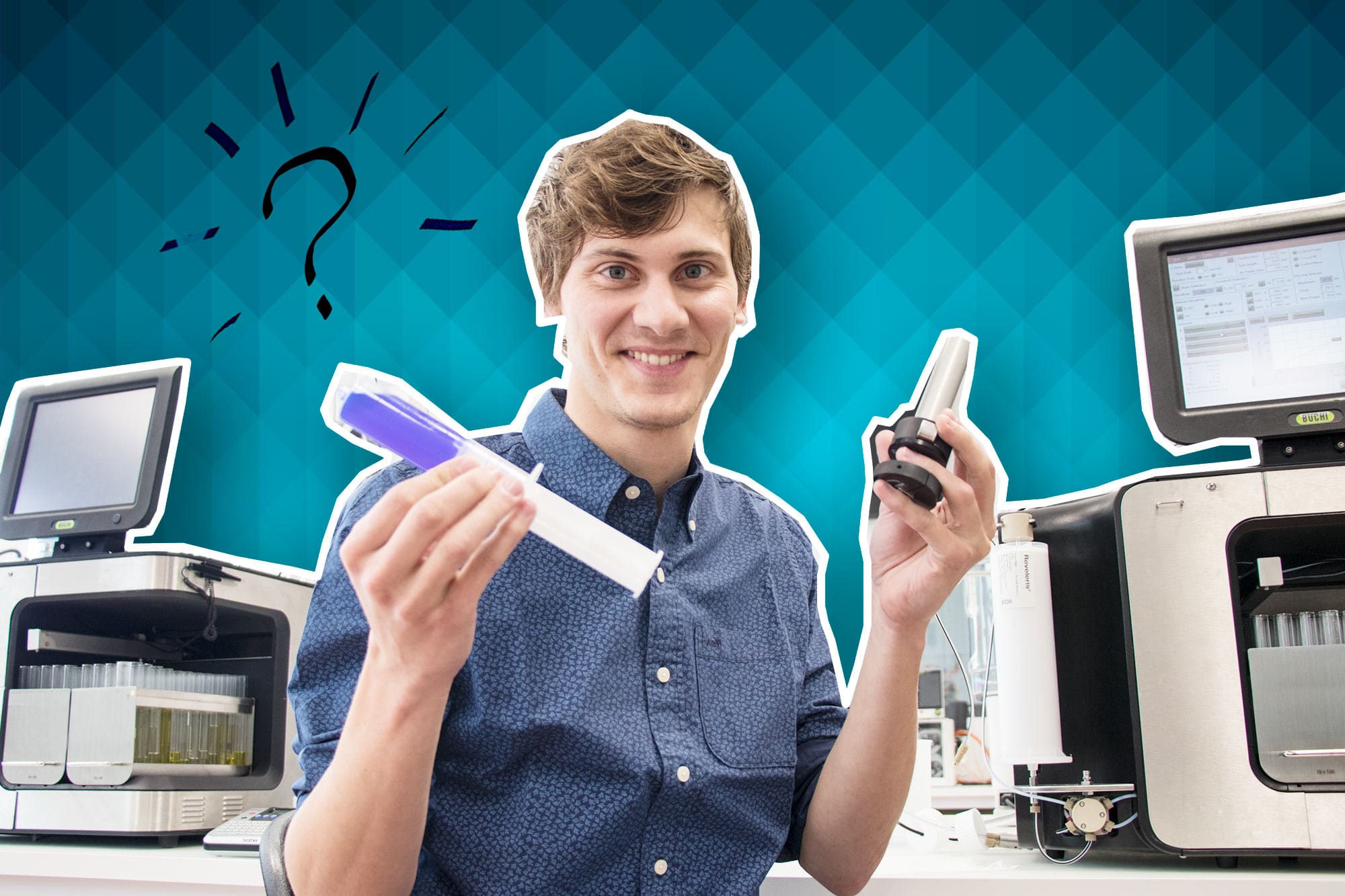What might happen if you don’t equilibrate your flash cartridges
To equilibrate or not to equilibrate flash Silica cartridges is a question that I have heard many times. To doubt the importance of the equilibration step could be tricky. Actually, there are a few major risks which you might face in case you decide to skip it.
That was a topic I recently had with a very close friend of mine who came to visit me in my hometown Kortrijk a few days after Christmas. Luc and I had worked together for almost a decade and during this time we had the fortune to not only become good and supportive colleagues but actually became very close and dear friends. That combined with the fact that my wife and I enjoy being surrounded by people very much, we were more than happy to welcome Luc at home.
We had already decided what to do with the time we had so we drove in the morning to Baraque de Fraiture to spend the whole day skiing as winter was generous last year and everything was covered in white shimmering snow. After staying outside in the cold all day, we sat down for dinner in a local restaurant, located near the skiing slopes, where an old fireplace helped the warmth slowly return on our faces. As usual, Luc and I went into deep conversations about the good old times reviving many dear and cozy memories from the lab, from the seminars we gave and from the company trips that we traveled together. We had thousands of stories to speak about and we did not realize how late it already was.
On our way home, I thought that you might find our discussion about the importance of equilibration in flash chromatography interesting as well and for this reason I am about to share it with you today.
The equilibration of Silica flash cartridges ensures uniform and steady flow by removing any trapped gasses during the separation process.
Luc and I have noticed that more and more people switch from open column systems to “smarter” ones. It looks like today the automated flash chromatography system with pre-packed cartridges is the standard norm on the market.
“To equilibrate or not to equilibrate?“
– a question, which Luc and I have heard, many many times. I can see why some chemists might find it a reason good enough to doubt whether flash cartridge equilibration is still a necessary step to make considering how fast technology changes the way we work and live.
Still, there are reasons enough why equilibration of Silica flash cartridges should be considered before loading your crude material.
Starting from the very beginning, the process of equilibration or making Silica properly wetted is a process, which generates heat due to the solvent adsorption, where the amount of heat depends on the following parameters:
Type of solvent – as Silica is a polar material, the adsorption of polar solvents will be stronger then the adsorption of less polar solvents and hence the heat generation will be more intense.
Flow rate – the higher the flow rate, the higher amount of heat generated.
Amount of Silica – in smaller size cartridges the heat can easily disappear due to the relatively short residence time and transfer to the cartridge wall. In larger size cartridges, which respectively contain higher amount of Silica, the heat transfer via the wall is slower and therefore greater amount of heat will be build up in the cartridge.
The heat generated can have some negative effects for the process of purification.
Pay attention here:
The heat can reach such high levels, which might damage the cartridge hardware due to the increase in the pressure. Something you and I definitely would like to avoid in our daily lab work.
The heat can influence the chromatographic process (adsorption/desorption) which can reduce the separation of the compounds.
The generated heat can cause partial or complete evaporation of semi-volatile compounds.
As you probably already thought, those negative effects might have different area of causing possible damage both on the chromatography process, system and environment. For this reason, it is important to know how to counteract them and have control over the heat generation. Recommendations shown below:
Reduce the amount of polar solvents in the equilibration mixture.
Reduce the flow rate during equilibration.
Once you take care of the packed Silica bed and you make it properly wetted, the heat generation will be under control and the process limitations, which the solvent type and high flow rates might cause, will be drawn down to a minimum ensuring you the best possible separation yield results.
Hope you found your answers to “to equilibrate or not to equilibrate” question and enjoyed reading! Luc and I definitely enjoyed writing this post for you!
If you have questions, which you would like me to write about on the blog, feel free to fill in the comments.
Until next time,


WANT TO STAY IN TOUCH?
Click on the button and receive the latest posts directly in your messenger!
Related Posts
3rd April 2018
How to do sample introduction in Flash Chromatography?
When introducing a sample in flash chromatography, are you going for Wet or Liquid Loading? Learn about the two sample introduction techniques and how they influence the sample loss during the purification process →
17th January 2018
The “Golden Mean” in Flash Chromatography
Which system describes perfectly the balance ratio between productivity and cost in flash chromatography? Open columns, automated or semi-automated systems?
30th October 2018
All you need to know about using TLC data for flash method optimization
Convert your TLC results into optimized separations and learn about how certain software can convert TLC data into better purifications →
5th July 2018
How to overcome limitations in flash chromatography with an ELSD
Find out how ELSD functions and what benefits this detector can bring to your chromatographic experiments compared to UV detectors alone →







